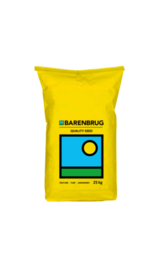Radish is a fodder/green manure crop that breaks through hard, compacted soil layers that have broken many a gardener’s back. It mechanically opens channels for water and roots to penetrate. Softening soils is not the only reason to use radish as a cover between fall and spring. Its deep roots recycle the previous year’s nitrogen, catching it before it leaches out. Seeing that Radish decomposes so quickly in areas where its lifecycle ends naturally, nitrogen is released in time for the next season’s use.
Establishment
The land should be cleared of weeds before soil preparation, especially perennial weeds. A fine seedbed is essential before broadcasting or drilling the seeds. The planting depth should not exceed 2 cm and the soil should be kept moist to help with germination. Autumn plantings are recommended for the best results, but it can also be planted in Spring.
Utilization
Fodder Radish is one of the main components in our COVERGRAZETM systems due to its versatility. It has the ability to produce high quality spring feed, but also has all the benefits of a green manure cover crop. It should be cut as green manure before flowering to ensure softer stems, allowing quicker decomposition, retaining more beneficial nutrients and are easier to incorporate into the soil.
Nooitgedacht
Nooitgedacht fodder radish, commonly known as Japanese Radish, is useful as a late autumn/early winter feed in the cooler eastern areas of South Africa. It may be used in the drier western areas but may require supplementary irrigation. It can be used as a fodder bank or source to supplement temperate and tropical pastures.



